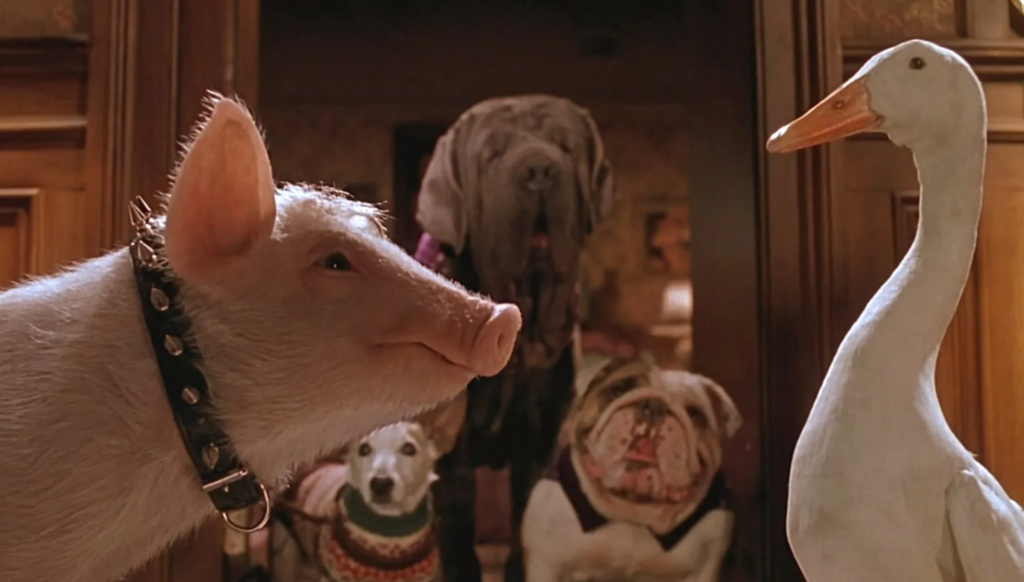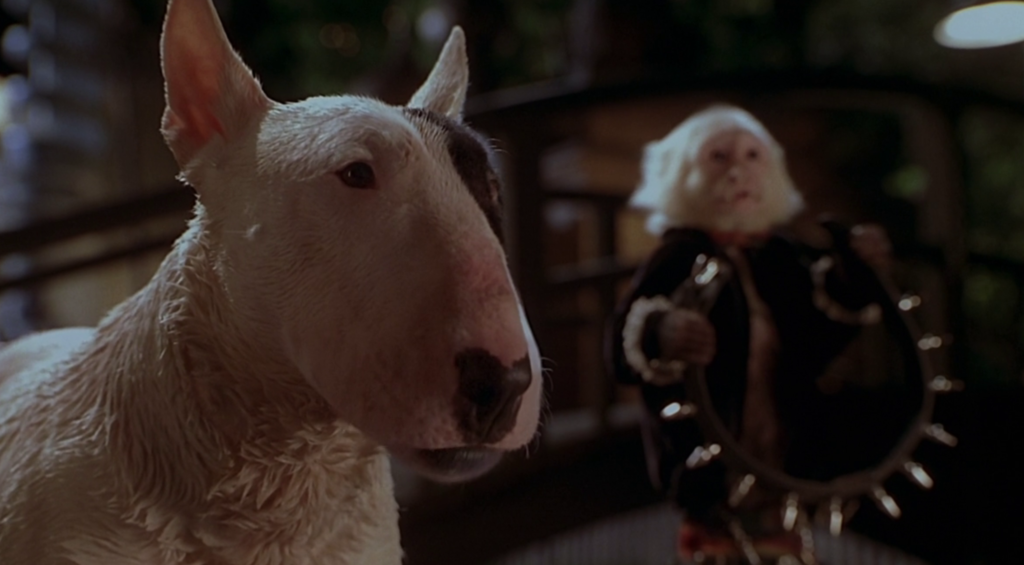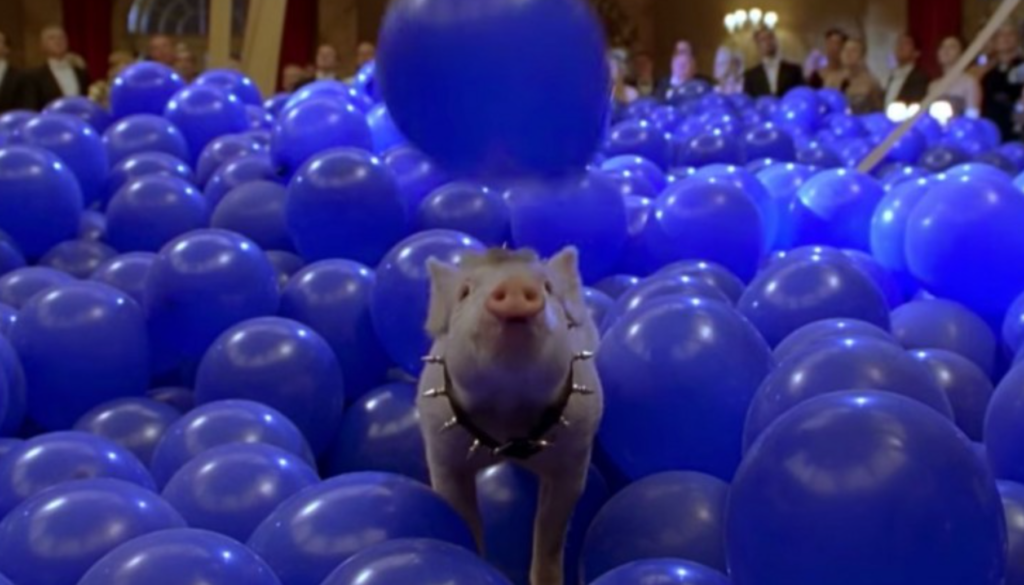Released in 1998, “Babe: Pig in the City” was more whimsical yet darker in tone than its predecessor, the Oscar nominated, Babe. George Miller, who co-wrote and produced the first film, took over the directing duties for this sequel and created a visual delight. Captivating and highly entertaining, the sequel to Babe seamlessly blends live-action and computer-generated imagery (CGI) to create a truly fantastic and immersive world that unfortunately failed to find its audience initially. The movie starts with a grim accident which sends Mrs. Hoggett and Babe off to the city to find a resolution. The film tanked at the box office when it originally aired but has become somewhat of a cult favorite. In this article, we delve into the fascinating visual style of “Babe: Pig in the City” and explore how it contributes to the film’s magic and why it deserves another look.

A Dark and Imaginative World:
One of the most striking aspects of “Babe: Pig in the City” is its departure from the bright and idyllic farm setting of its predecessor. Instead, the film takes us to a dark and bustling city filled with towering buildings, vibrant characters, and a sense of constant movement. This shift in setting allows the filmmakers to explore contrasting themes of urban chaos and the resilience of the human-animal bond.

Blending Live-Action and CGI:
What sets “Babe: Pig in the City” apart is its seamless integration of live-action footage with CGI animation. Commonplace in today’s cinematic world with all of the superhero and recent Disney live-action remakes, “Babe: Pig in the City” was a pioneering achievement during its original release. The film employs groundbreaking visual effects techniques that make the animals’ interactions with the human world appear remarkably realistic. From Babe’s charming expressions to the intricate details of the cityscape, the CGI seamlessly enhances the storytelling and immerses the audience in this whimsical world.
Expressive Animal Characters:
The filmmakers beautifully bring the animal characters to life through a combination of animatronics, puppetry, and CGI. Each animal, including Babe and his newfound friends, is imbued with distinct personalities and human-like expressions. This level of realism and emotional depth in the animal characters allows the audience to connect with them on a profound level, transcending the boundaries of traditional storytelling.
Contrasting Visual Palette:
The film’s visual style is characterized by a striking contrast between the vibrant, colorful cityscape and the gloomy, shadow-filled corners of the urban environment. The vivid hues and exaggerated architecture create a surreal and dreamlike atmosphere, emphasizing the stark divide between the bustling human world and the innocence of Babe’s perspective. This contrast heightens the emotional impact of the story, showcasing the stark differences between good and evil, chaos and harmony.

Dynamic Camera Work:
The visual style of “Babe: Pig in the City” is further enhanced by the dynamic camera work employed throughout the film. The camera moves fluidly through the bustling streets, capturing the energy and excitement of the city. From sweeping aerial shots to intimate close-ups, the cinematography amplifies the emotions and perspectives of the characters, immersing the audience in the narrative.
Legacy and Enduring Appeal:
Despite being released over two decades ago, “Babe: Pig in the City” continues to captivate audiences of all ages. Its visually stunning and imaginative style remains as enchanting today as it was upon its release. The film’s groundbreaking blend of live-action and CGI set new standards for visual effects in family films and showcased the boundless possibilities of storytelling through visuals.
“Babe: Pig in the City” stands as a testament to the power of visual storytelling. Through its unique visual style, blending live-action with CGI, the film creates a captivating and immersive world that draws audiences into the story of Babe and his journey through a vibrant yet foreboding city. The film’s expressive animal characters, contrasting visual palette, dynamic camera work, and enduring legacy all contribute to its status as a timeless cinematic gem. “Babe: Pig in the City” remains an exquisite example of how visual style can elevate storytelling and leave an indelible mark on the hearts of viewers.